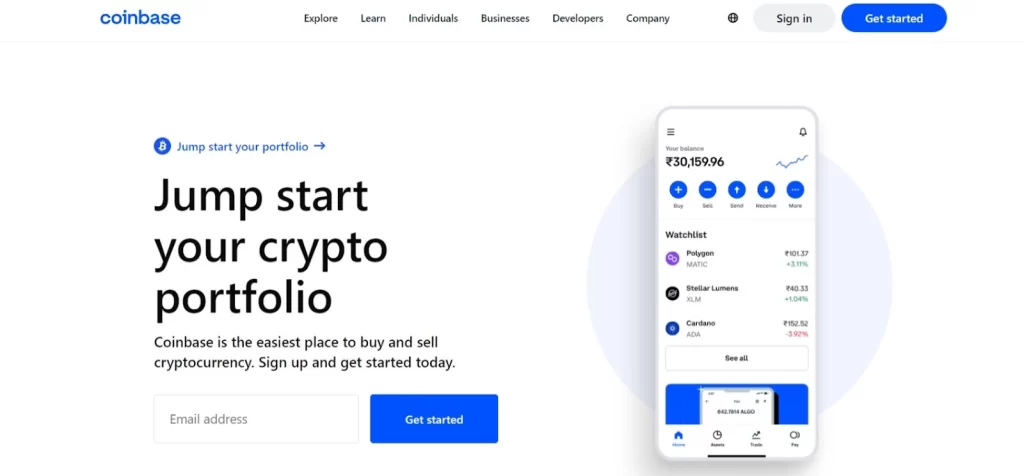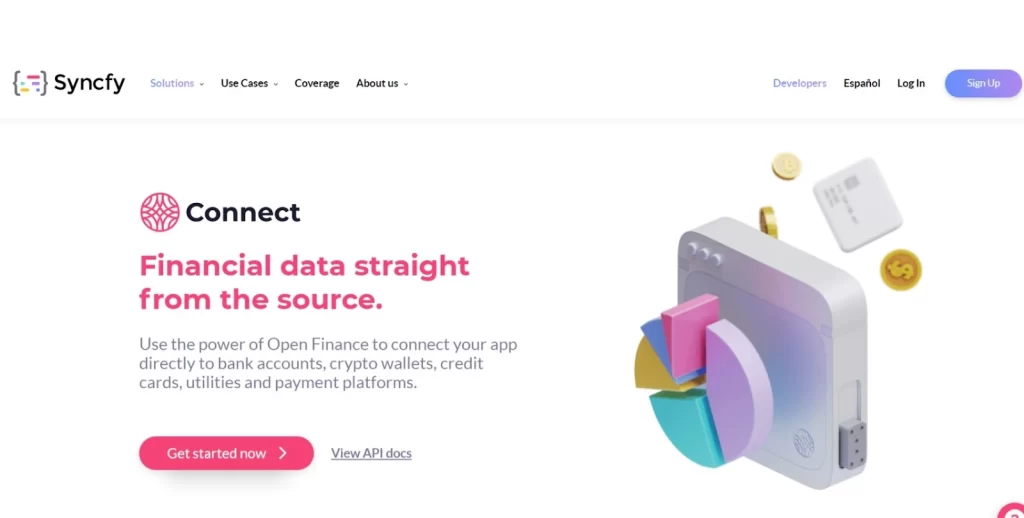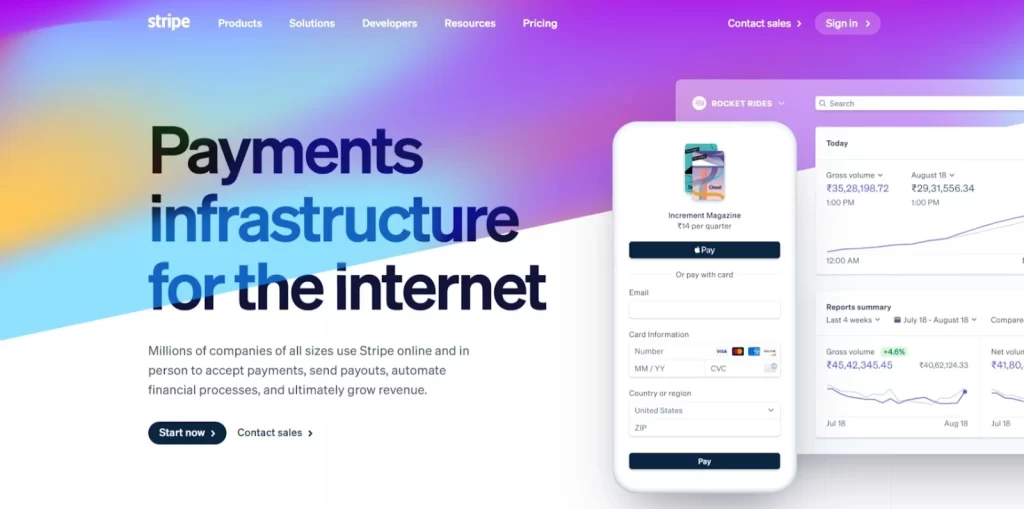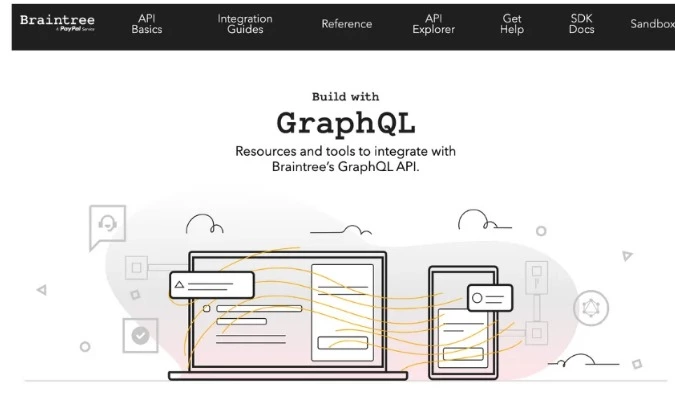The explosive growth of FinTech has made a remarkable transformation in the financial landscape.
Interconnection between banking services and mobile apps is a crucial aspect that has set a revolutionary backbone of this financial evolution, which became possible with fintech’s APIs.
Collaboration between mobile applications, traditional banks, payment processors, credit card companies, and lenders helps the industry to offer enhanced services across the fintech industry. However, many organizations hesitated to adopt APIs in past decades for innovative fintech solutions due to a lack of understanding about potential API benefits and the concern for risks in fintech APIs.
Today’s financial sector leaders are more interested in leveraging APIs’ advantages for business automation, scalability, and acceleration.
Organizations seeking to implement API in their fintech business can understand important aspects of API development in fintech applications, such as use cases, advantages, tech stack, and others throughout the blog.
What Are FinTech APIs?
A set of protocols facilitating secure communication between mobile devices and a bank’s servers.
Fintech APIs enable customers to connect with banking platforms to fetch their account balance in real-time and perform other banking operations through fintech apps.
Due to the usage of open banking on the largest scale, APIs in finTech are in demand to facilitate fintech services to third-party service providers. Many banking APIs implement secure authentication and encryption measures to safeguard sensitive information.
Fintech APIs establish crucial connections between developers and payment networks on the backend end with a primary intent to fetch and present billing details, making them pivotal components of a bank as a Service (BaaS) ecosystem.
Financial APIs can adapt to various services through emerging fields such as platform as a service, banking as a service, and embedded finance, where customers can access fast, convenient, and secure financial services.
How Do Fintech APIs Work?
FinTech APIs offer communication and data exchange between multiple financial technology systems and external applications by acting as digital intermediaries. Here’s the working of APIs in Fintech:
1. Authentication
To offer data access to only authorized users, developers need to authenticate themselves before interacting with a bank’s API which is typically done through API keys, OAuth tokens, or other secure authentication methods.
2. Endpoint Access
To access different fintech functionalities, fintech APIs offer specific endpoints, including retrieving account information, making payments, checking balances, and more.
3. Request and Response
The API processes the fintech request In a suitable format like JSON or XML and sends back a response to users, enabling them to specify the action they want to perform by sending requests to endpoints.
4. Data Transmission
After responding to specific requests, the data is exchanged between the developer’s application and the bank’s server over secure channels to ensure the confidentiality and integrity of the information, which includes often using HTTPS.
5. Authorization
User consent and proper authorization are essential for performing actions that involve sensitive data or transactions. Moreover, APIs often use OAuth or similar protocols to securely handle user authentication and authorization.
6. Webhooks and Callbacks
Developers can get notified about the relevant fintech events around their applications through webhooks or callbacks. For example, a developer can receive notifications of new transactions on a user’s account by setting up a webhook.
7. Rate Limiting
Helps banks and financial institutions to prevent abuse or overuse of their APIs through rate limiting. Rate limiting restricts the number of requests within a specific time frame, which developers can do to ensure fair usage and system stability.
APIs In FinTech Advantages
Both app developers and users can benefit from API banking services for accessing and delivering a range of advantages for fintech services. Here are the benefits of APIs in fintech:
1. More Services
Users now have access to the banking facilities only available in branches. They can use financial services aggregators to compare offers between banks and other institutions, increasing market competition to benefit customers. Moreover, the prices of financial services are decreasing, with an increase in the variety of services offered.
2. Access To Transaction Data
Now, with fintech APIs, users have full control of their data and demand banks to share their data with their desired third-party provider. In the past, banks hesitated to share user information and were rather selective when sharing data.
3. Minimize Operational Costs
Banks can offer their users services without requiring extensive infrastructure investments by leveraging FinTech API integrations. Also, from simplified financial management and access to a wide range of services, customers can benefit through third-party applications, allowing resource allocation optimization and minimizing operational costs for banks and FinTech providers.
4. Improved Services
Hundreds of FinTech startups have emerged as many businesses have realized the role of APIs in the banking industry, which offer improved services by allowing users to access many banking services with the integration of banking APIs. Users can easily save their banking information in third-party bookkeeping software, helping them to track every transaction in one place.
5. Product Portfolio Scaling
FinTech and banking organizations can expand their product portfolio with APIs in banking. API allows banks to extend their products into other apps, such as insurance or products.
Due to the flexibility of APIs that provide portfolio exchange across businesses and industries, such portfolio growth is possible for many banking firms.
Banks with APIs can offer non-financial products alongside financial items. For instance, cardholders of Emirates NBD, A Dubai government bank, can access hospitality, entertainment, and retail items, which becomes possible after the integration of API in fintech.
6. Fast and Efficient Operations
Banks can provide customers with a seamless experience, helping them quickly and proficiently manage banking transactions through mobile banking, online banking, and wallet services.
With APIs, transactions can be executed swiftly, contributing to quicker payment processing, fund transfers, and other financial transactions. This is particularly important for businesses and consumers who value speed and efficiency.
Use Cases Of APIs In FinTech
The use cases in FinTech are diverse and have significantly transformed the financial industry. Here are some notable examples:
1. Blockchain and Cryptocurrency
Cryptocurrency exchanges use APIs to enable users to trade, check market prices, and manage their digital assets programmatically. Blockchain APIs are also employed for smart contracts and decentralized applications (DApps).
Also, cryptocurrency exchange APIs provide real-time market data, including price, volume, and order book information, allowing developers to create trading algorithms and analyze market trends.
Example: Coinbase
Coinbase, due to its extremely user-friendly interface and trading experience, has managed to become one of the most popular cryptocurrency exchanges in the United States.
The crypto platform has a strong security record and has never suffered from a major cryptocurrency hack, where it protects users’ funds by actively preventing them from sending cryptocurrency to known scam addresses.
Also, the Coinbase has FDIC-insured Fiat assets, which means fiat currency deposits of United States residents on the Coinbase platform are insured up to a maximum of $250,000.
2. Payment Gateways
APIs facilitate seamless online payments by connecting e-commerce websites or mobile apps with payment processors. They enable the transfer of payment information securely and quickly.
Merchants with fintech APIs can initiate payment transactions, providing a secure way to transfer funds from customers to merchants. Also, APIs facilitate real-time communication between the payment gateway and the merchant’s system to confirm successful transactions.
Example: Paypal
PayPal, established in 1998, is one of the best payment gateways in the USA that allows users to make payments and money transfers digitally, supporting over 100+ currencies for international businesses.
There are various advantages to using PayPal for businesses, such as Seamless and secure checkout, mobile-first shopping experience, fraud protection technology, easy website integration, customer support, Multiple payment methods, and much more.
3. Personal Finance Management
APIs enable financial data integration into personal finance management apps. Users can track expenses, set budgets, and receive insights into their spending patterns by connecting their bank accounts and credit cards.
APIs allow users to view and manage multiple financial accounts from different institutions within a single application. This helps in budgeting, financial planning, and gaining a holistic view of one’s financial health.
Example: Mint
Mint is a most used budgeting app that offers valuable features to users to help them monitor and analyze their finances, including personalized insights, customizable budgets, and subscription monitoring.
Users can track multiple credit cards, pay monthly bills, manage debt, and grow their net worth by simply importing their financial activity to Mint by logging in to their bank account through the Mint platform.
4. Lending Platforms
FinTech companies offering lending services use APIs to assess creditworthiness, verify identities, and streamline the loan application process.
These APIs often integrate with alternative data sources such as social media, utility payments, and online behavior for a more comprehensive risk assessment. Moreover, APIs streamline the loan application process by allowing borrowers to submit online applications.
Example: Kiva
Kiva, one of the most used lending platforms, was founded in 2005 to expand financial access for helping communities by connecting investors with microentrepreneurs and small business owners globally.
Investors can lend as little as $5, where every dollar loaned on Kiva goes to funding loans, helping to maximize the impact of investors’ contribution by allowing them to re-lend the same amount to other borrowers.
5. Robo-Advisors
Investment platforms use APIs to implement robo-advisory services, providing automated, algorithm-driven financial planning and investment advice based on user preferences, risk tolerance, and market conditions.
APIs enable robo-advisors to access up-to-date market information, including stock prices, bond yields, and economic indicators, and provide access to financial research and analysis tools, helping robo-advisors make informed investment decisions based on current market conditions.
Example: BetterMent
Betterment is one of the most downloaded robo-advisor apps for investing. The platform offers basic Betterment Digital service, which charges an annual fee of 0.25% of users’ balance, plus there is no minimum balance requirement.
The app also comes with access to live financial advisors where users with higher balances seeking for more advanced services can take benefit of Betterment Premium.
6. Market Data and Analytics
Real-time market data, financial news, analytics, and other finance-related information help users make informed investment decisions. Banks and other fintech-based organizations can use fintech API to offer their customers and users finance-related information.
Also, users with fintech API can access past market data, including price changes, trading volumes, and other relevant metrics, which is crucial for backtesting trading strategies and conducting historical market analysis.
Example: Ascend Commercial Suite
The company empowers consumers and their clients to manage data to maximize every opportunity, from buying a home to sending a child to college to growing a business exponentially by offering them access to their fintech data.
Ascend Commercial Suite gathers, analyzes, and processes finance data, helping users control their finances and access financial services through which users make smarter financial decisions.
7. Regulatory Compliance
APIs assist financial institutions in complying with regulatory requirements by facilitating secure and standardized data exchange. This is crucial for Know Your Customer (KYC) processes, anti-money laundering (AML) checks, and reporting.
Banks and other fintech startups can use APIs to assist in tracking and monitoring financial transactions and identify unusual patterns or behavior. API helps businesses to automate the reporting process to regulatory bodies, ensuring timely and accurate submission of required transaction reports.
Example: Droit
The platform offers automated intelligent decision-making and computational law to advance global regulatory compliance and real-time controls, empowering institutions to make millions of decisions complying with thousands of complex rules.
Institutions can rely on the Droit platform to access solutions for pre-trade and post-trade controls and evaluate the process of compliant regulatory reporting, transactions, and more.
8. Open Banking Initiatives
Third-party developers can build applications and services around financial institutions’ data through APIs, where open banking initiatives aim to promote transparency, competition, and innovation in the financial services sector.
APIs are central to open banking, enabling secure financial data sharing among different institutions. This encourages competition, innovation, and the development of new financial services.
Example: Plaid
A fintech company allows businesses to access customer data safely and build innovative financial services and products by providing them with a suite of APIs having connections to over 11,000 US financial institutions.
The platform comprises many valuable key features, including transaction data, account balances, and authentication, enabling developers to build applications connecting users’ bank accounts, credit cards, and other financial accounts.
9. Insurance Technology
API enables accurate and dynamic policy pricing by allowing insurance providers to access real-time quotes based on specific customer inputs. Also, API helps users compare coverage, premiums, and features from multiple providers by offering the integration of insurance products into comparison platforms.
Also, digital insurance platforms can connect with external data sources for risk assessment, automating claims processing, and integrating insurance services into other financial applications.
Example: Next Insurance
The company provides a digital platform where customers can access certificates of insurance and receive in-house claims support. Next insurance minimizes businesses’ time within 48 hours to obtain coverage by leveraging artificial intelligence.
Also, Next Insurance uses AI to automate and process applications within minutes, providing quick and efficient customer coverage and eliminating the need for intermediaries and small businesses to provide transparent and affordable coverage.
How Can Organizations Access The Full Potential of Banking APIs?
From driving innovation to improving customer experiences and creating new revenue streams, banking APIs involve a strategic approach to leveraging these application programming interfaces. Here are key steps and strategies businesses can use to achieve this:
1. Understand the Regulatory Environment
Businesses can ensure their APIs align with data privacy regulations (e.g., GDPR), PSD2 in Europe, or Open Banking initiatives in different regions to protect customer data.
2. Identify Use Cases and Goals
Organizations can use banking APIs to determine specific use cases and business goals, including payments, account information, identity verification, or customer onboarding.
3. API Selection and Partnerships
By working in collaboration with banks, fintech companies, and third-party providers, organizations can select from various APIs that align with their business objectives and customer needs and access a variety of APIs that can fulfill business requirements.
4. Focus on Customer-Centric Solutions
By focusing on streamlined onboarding, real-time transaction information, or personalized financial insights, businesses can design and develop solutions that enhance the customer experience.
5. Secure and Scalable Infrastructure
To handle increased API traffic and demand, having scalable infrastructure is essential. Therefore, businesses can use fintech API to invest in robust security measures to protect sensitive financial data.
How To Start API Fintech Development?
Staring API fintech development involves creating secure and scalable programs for financial services, which often involve handling sensitive data. Here’s a step-by-step guide to help you start API fintech development:
1. Understand Fintech Requirements
Recognize the critical importance of fintech across industries and comply with industry-specific security standards by implementing encryption secure authentication mechanisms. Also, understand compliance standards of financial regulations and in the regions you plan to operate, which may include data protection regulations and financial industry standards.
2. Identify Fintech Use Case
Create a user persona to outline the specific functionalities and interactions your API will support. Also, clearly define the purpose of your fintech API, whether you are focusing on payments, financial data aggregation, lending, or another area such as lending, wealth management, insurance, blockchain, or another niche.
3. Choose Fintech API Technology Stack
Based on your team’s expertise and the specific requirements of your project, choose a programming language such as Java, Python, C#, and Node.js. Also, select a framework that facilitates API development, including Express for Node.js, Spring Boot for Java, Flask or Django for Python.
4. Design Your Fintech API
Choose a data format, typically JSON or XML, for processing API requests and responses. This can be done by defining the API endpoints by specifying the resources and actions that can be performed.
Consider OAuth, API keys, or other appropriate mechanisms as secure authentication methods. Also, decide on the architectural style of your API where you can consider using RESTful APIs, which are common in fintech. However, GraphQL is also gaining popularity nowadays in fintech.
5. Build Security Measures
Based on user roles and permissions, enforce strict access controls through access control, where you can consider using data encryption to encrypt sensitive data at rest by implementing SSL/TLS encryption for data in transit.
Also, implement multi-factor authentication to enhance user security and integrate fraud detection systems to identify and prevent fraudulent activities through your FinTech APIs. Protect your fintech API against common web threats such as SQL injection & cross-site scripting by implementing security best practices, including data validation and input sanitation.
6. Financial Logic And Handling Errors
Implement secure payment processing logic where you can involve financial data and implement logic for secure data aggregation and retrieval. Also, provide meaningful error messages by developing robust error-handling mechanisms by tracking relevant events such as API usage and errors.
7. Testing
Perform unit testing to track how different parts of your API work together to help you easily verify the functionality of individual components. Address vulnerabilities by conducting thorough security testing.
Also, consider performance testing to ensure your system can efficiently handle and respond to the expected load. Also, test your API in an environment that simulates the production environment.
8. Documentation and Deployment
Document your compliance measures and procedures clearly and comprehensively for developers and users that explain how to use your API, including endpoints, request/response formats, and authentication methods.
Implement CI/CD pipelines for automated testing and deployment where you can select a secure and reliable hosting platform and cloud services like AWS, Azure, or Google Cloud to distribute your FinTech APIs.
9. Monitoring and Analytics
Understand how users interact with your API by gathering analytics using analytical tools to monitor the performance of your API in real time. Monitoring and analyzing your FinTech API will help you make necessary adjustments based on user feedback, changing regulations, and emerging technologies.
Also, monitor the behavior of your API by implementing logging to track errors in your Fintech API and make as quick decisions as possible to resolve issues.
Top 5 Fintech APIs
Many users interact with payment processing platforms for different purposes, from purchasing an item from their favorite e-commerce site to paying their friend for dinner. Here are the best Fintech APIs offering their services to other businesses and users.
1. Paypal API

By using a RESTful endpoint structure such as HTTP methods, the OAuth 2.0 protocol, and JSON-formatted payloads, PayPal’s Payments REST API offers various services such as authorizing payments, capturing authorized payments, refunding payments, and displaying payment information.
PayPal payment processors are known for their extensive APIs offering many fintech services, including disputes, invoices, billing plans, subscriptions, product catalogs, and more.
| Founded in | 1998 |
| Founders | Peter Thiel, Max Levchin, Ken Howery, Luke Nosek, Yu Pan |
| Industry | E-Commerce Platforms, FinTech, Mobile Payments, Transaction Processing |
| Headquarters | Palo Alto, California, United States |
2. Coinbase Digital API

Fintech apps using Coinbase Digital API can integrate cryptocurrencies and connect to over 40 million Coinbase users. The Coinbase platform is a popular place to buy, sell, manage, and store cryptocurrencies.
Businesses using Coinbase Digital API can perform crypto-based fintech operations such as generating bitcoin, lite coin, and ethereum, securely storing bitcoin cash, retrieving real-time and historical price information, and receiving payment notifications.
| Founded in | 2012 |
| Founders | Brian Armstrong, Fred Ehrsam |
| Industry | Bitcoin, Blockchain, Cryptocurrency, FinTech,Trading Platform |
| Headquarters | San Francisco, United States |
3. Syncfy Connect API

Syncfy offers an API functionality allowing businesses to invoice, integrate with fiscal authorities, and accept payments through which their customers can view their data-driven financial transactions, including credit cards and crypto exchanges.
Using Syncfy Connect API, Fintech apps can securely integrate information for a seamless banking, transaction, or lending experience from financial and banking institutions.
| Founded in | 2016 |
| Founders | Gerardo Treviño, Rafael Fong |
| Industry | Mobile Payments, FinTech |
| Headquarters | Austin, Texas, United States |
4. Stripe API

The Stripe API enables apps, websites, and in-person retailers to accept and send payments supporting over 135 currencies for global transactions by offering robust features such as recurring payments, fraud prevention, etc.
Stripe API offers enhanced financial services such as a wide range of machine learning tools such as Stripe Radar, payouts, financial reporting, flexible invoicing, prebuilt UI components, third-party integrations, and more.
| Founded in | 2010 |
| Founders | Carlos Virella, John Collison, Patrick Collison, Rezaul Hoque |
| Industry | Finance, FinTech, InsurTech,Mobile Payments, SaaS |
| Headquarters | San Francisco Bay Area, West Coast, Western US |
5. Braintree API

Braintree is a Level 1 PCI DSS-compliant service provider that keeps cardholder data secure and offers end-to-end payment solutions. Also, the platform allows businesses to accept and process cards, local payment methods, and wallets available on Android, iOS, and the web.
| Founded in | 2010 |
| Founders | Bryan Johnson, Jenna Wyer |
| Industry | Billing, Credit Cards, Financial Services, FinTech, Mobile Apps.Payments, Software |
| Headquarters | Greater Chicago Area, Great Lakes, Midwestern US |
Tech Stack To Consider For API Development In Fintech
API development in the fintech sector often requires a robust and secure tech stack to ensure compliance with regulatory standards, protect sensitive financial data, and deliver high-performance services. Here’s a typical tech stack for API development in fintech:
1. Programming Languages
- Java
- Node.js
- Python
2. API Standards and Frameworks
- RESTful APIs
- GraphQL
- OpenAPI
3. API Security
- OAuth 2.0
- JWT (JSON Web Tokens)
- API Gateways
4. Database Systems
- Relational Databases
- NoSQL Databases
5. Cloud Services
- AWS
- Azure
- Google Cloud
6. Message Queues
- Apache Kafka
- RabbitMQ
7. Containerization and Orchestration
- Docker
- Kubernetes
8. Logging and Monitoring
- ELK Stack (Elasticsearch, Logstash, Kibana)
- Prometheus
- Grafana
9. Continuous Integration/Continuous Deployment (CI/CD)
- Jenkins
- GitLab
- CI/CD
10. API Documentation and Testing
- Postman
- OpenAPI
Conclusion
The way financial services are developed, delivered, and consumed has revolutionized after the introduction of API in fintech.
Fintech companies, traditional financial institutions, and third-party developers can create innovative solutions by harnessing the power of APIs to offer customers increased convenience, efficiency, and personalization.
Banks, through API, can connect with e-commerce websites, facilitating the process of online payments. Moreover, banks can integrate with brick-and-mortar stores to offer financing and lending options at POS locations.
However, to leverage the potential of APIs for FinTech business, it is vital to understand that choosing the right digital solutions provider has expertise in API development in the fintech industry.
Contact us for API development solutions. We have worked across various FinTech business models and helped businesses customize and simplify banking solutions with API development.
Idea Usher is a software development company that provides quality app development services to worldwide clients. Contact our experts and take your fintech business to the next level with our development services.
Work with Ex-MAANG developers to build next-gen apps schedule your consultation now
FAQ
Q. What is Open Banking?
A. A system where financial institutions offer their APIs (Application Programming Interfaces) to third parties to allow them to access users’ data and design new financial services and applications for fintech and banking solutions.
Q. What is an API in banking?
A. API in banking facilitates the integration of financial services and applications, resulting in enhanced customer experiences and operational efficiency. A collection of protocols enabling software applications to exchange data and communicate.
Q. How does API work in banking?
A. APIs in FinTech enable banks to provide customers with account access, payments, and financial data sharing through multiple channels. APIs also facilitate collaboration with FinTech partners to enhance service offerings. Also, APIs in banking act as a standardized means for secure communication and data exchange between multiple software systems, including banking applications and third-party services.




















